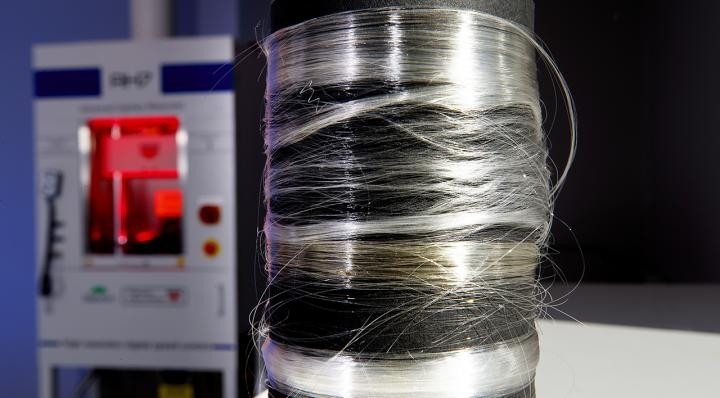New breakthrough technique could revolutionise biodegradable plastic
Replacing oil-based plastics with biodegradable materials would have huge environmental benefits.

New research has found that introducing a simple step into the production of biodegradable, plant-based plastic can enhance its properties while also removing a key obstacle to manufacturing it commercially.
Replacing oil-based plastics with biodegradable analogues would have widespread environmental benefits. Hundreds of millions of tonnes of oil-based plastics are produced every year, with huge amounts ending up on landfill or in the sea.
They can take centuries to degrade, polluting the environment in the process. Some bio-plastics on the other hand, degrade in a matter of months depending on the conditions.
Scientists from the University of Nebraska-Lincoln and Jiangnan University discovered that mixing two types of a certain bio-plastic and raising its temperature several hundred degrees, then allowing them to cool, significantly improved the resulting material's resistance to both moisture and heat.
Utilising this method meant that the team could remove from the production process the expensive and time-consuming techniques which are normally needed to manufacture bio-plastics.
Yiqi Yang from Jiangnan University thinks implementing this technique could mean that manufacturers will be able to continuously produce plant-derived plastics on a huge scale, that at least approaches the level of oil-based plastic production. Their results were published in the Chemical Engineering Journal.
"This clean technology makes possible [the] industrial-scale production of commercialisable bio-based plastics," the authors of the study noted.
"We just used a cheap way that can be applied continuously, which is a big part of the equation," Yang said. "You have to be able to do it continuously in order to have large-scale production. Those are important factors."
The technique the researchers used to produce the plastic in the experiment uses a material called polylactide which is made from corn starch, sugarcane or other plants. Unfortunately, polylactide is very vulnerable to heat and moisture, especially during the production process, which has limited its use in manufacturing.
Scientists have long been searching for a solution to this problem and previous discoveries have provided some clues about how to address it. It is known, for example, that mixing two different types of polylactide – known as L and D - produces a material that performs slightly better.
However, forcing the molecules of these different types to stick together permanently is difficult and expensive, and usually involves the use of solvents or chemical agents which pose their own environmental problems.
"The problem is that people couldn't find a way to make it work so that you could use it on large scales," explained Yang. "People use nasty solvent or other additives. But those are not good for continuous production. We don't want to dissolve the polymers and then try to evaporate the solvents, and then have to consider reusing them. That's just too expensive [and] not realistic."
The team decided to try another method which consisted of mixing pellets of the two different types of polylactide, spinning them into fibres and rapidly heating them to temperatures of up 200 °C.
The melting temperature of the resulting material was found to be significantly higher than just the L or D type plastic on its own. The end product also maintained its structural integrity and strength even after being immersed in boiling water, mimicking the conditions bio-plastics must endure when being incorporated into dyed textiles.
The plan now for the researchers, who have already demonstrated their technique in a controlled environment, is to scale up and see how the approach might be integrated into existing manufacturing techniques.
© Copyright IBTimes 2025. All rights reserved.





















